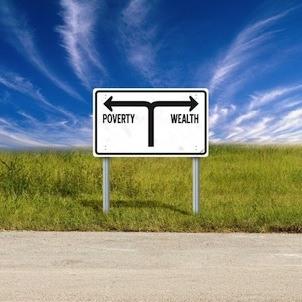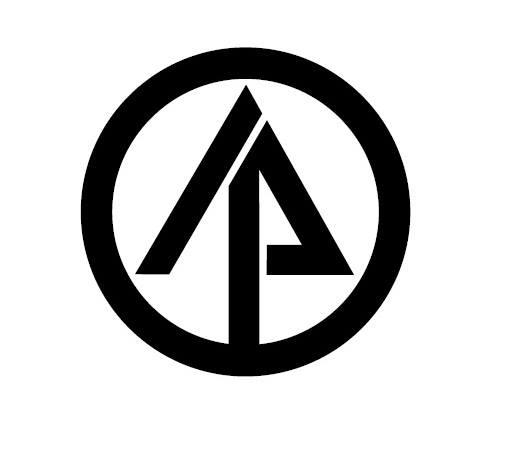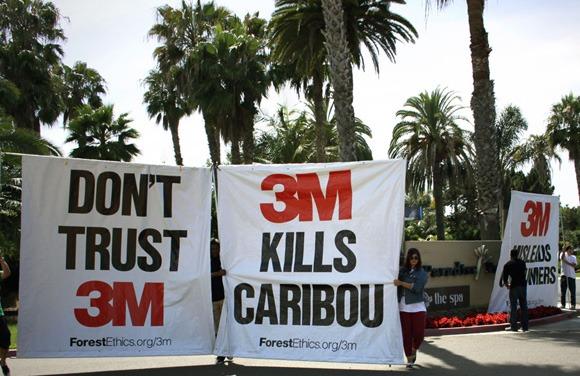What's the State of Shared Value?


By Meghan Ennes
If I were to sum up this year’s Shared Value Leadership Summit in one word, that word would take the form of a question: How? The conversations that took place in the ballroom of the Conrad New York earlier this month did not involve what shared value is and why organizations should consider it. Rather, the resounding question I heard discussed in that room – whether on the stage or in conversations between colleagues – was how organizations can execute on this strategy successfully.
The main point is that shared value – the approach that business can profit by doing good for society – is experiencing a shift from a conceptual idea to a full-fledged corporate movement: one that has budgets, spreadsheets and accountability. As Intel’s Suzanne Fallender put it, the next step is not as sexy as the first. Now is when we start the dirty work of implementation. Fallender explains in “What Is Strategy” for the CSR@Intel blog:
“Much of the discussions over the two days focused on the 'how' of shared value—how companies are building the concept of societal impact into their vision statements and executive compensation, organizing differently to increase internal collaboration and work toward shared goals, and collaborating in new ways with external stakeholders … as companies move into the implementation phase of shared value, it will be important for companies to share best practices, challenges, and case studies to advance learning.”
And it’s in this stage that we have to ask the tough questions about how we’re actually going to do this work. Shared Value Initiative consulting affiliate Phil Preston got to thinking about these execution questions (he posed 10 in his blog). For example: At the enterprise level do shared value initiatives need to be structurally protected? He followed up this list with a formal post on Asking Tough Questions About Shared Value. And for more on the nitty-gritty of implementation, Laura Palantone of APCO Worldwide wrote a very practical how-to post based on the common themes of the days’ speeches, panels and overall conversations.
In his keynote address, Prof. Michael E. Porter expressed optimism in the progression of what he himself called the shared value “movement.” But he acknowledged that there’s still work to be done. Devex’s Adva Saldinger reported, “One of the key challenges [Porter] raised is that there's really a reluctance on the part of business to talk about profiting by doing good.” This presents a barrier to making the business case, where you need to talk about where the money is coming from:
The next day, Saldinger followed up with another video wrap-up on Nestlé’s success with leadership buy-in, partnership lessons from Rockefeller Foundation and TechnoServe, and a sneak peek of new investor research from Michael Porter and Mark Kramer:
The event not only staged a conversation on shared value, but some exciting announcements for its presenters as well. Speaker Tony O. Elumelu held a press conference to discuss his recently announced Africapitalism Institute to promote economic and social wealth across the continent. In the Investing in Prosperity panel, Elumelu also stressed the power of governments – especially in emerging markets – to better enable the private sector’s role in development, which was covered in the Nigerian Tribune.
The International Finance Corporation (IFC) also announced at the Summit the launch of a database of the spending patterns of low-income consumers, reports Devex Impact. “Why do we care about these companies that include the poor?” asked Eriko Ishikawa, IFC global head of inclusive business, “Because we see that the needs are so huge, and governments and philanthropies can only do so much.” In a statement made that day, IFC CEO (and Summit speaker) Jin-Yong Cai stressed the importance of making this information “freely available in a form that is useful to the private sector.”
And on a personal note for our team, the Clinton Global Initiative also covered the Summit, a great reminder of the CGI Commitment to Action to launch the Shared Value Initiative back in 2012. CGI noted that the Initiative has surpassed those goals and helped others like Western Union and BD (also in attendance at the Conrad) shape their own.
For more summary of the Summit, I suggest taking a look at JWN Event’s recap of day one. And consulting affiliate Jocelyne Daw’s “brief debrief” of both days is a meaty outline of five highlights which represent bigger developments in the shared value field.
Although the state of shared value is still in flux, this moment is a great one to note its progress. In his reflections on the event, TriplePundit’s Raz Godelnik muses that shared value could be the bridge where the elite Davos types and the 99-percenters can find common ground. And as we convened with 400 other eager practitioners at the Shared Value Leadership Summit last month, I couldn’t help but also notice that power of shared value to bring people together.
EPA Carbon Emissions Proposal: Q&A With the American Wind Energy Association


The EPA recently announced a proposed rule to reduce carbon emissions from existing power plants to 30 percent below 2005 levels by 2030. We interviewed Tom Vinson, vice president of Federal Regulatory Affairs for the American Wind Energy Association, to learn how wind energy can help states respond the EPA proposal to cut power plant emissions.
TriplePundit: Is wind energy uniquely suited to help utilities comply with the new proposed EPA regulation?
Tom Vinson: The deployment of wind energy has grown significantly over the last decade, and a variety of energy sources have been displaced as a result of that, including coal. This is evidence that we can grow the deployment of wind energy and maintain a reliable, affordable electric system for consumers.
There are 11 different states that have achieved emission reductions of 10 percent or more because of wind and another three states that are just below 10 percent. Twenty percent wind in the eastern U.S. would yield emission reductions of 25 percent. Wind energy can be a significant player in the draft requirements that the EPA just issued.
3p: Many interest groups are creating ads for or against the proposed rules. What message would you like to send to the American people?
TV: One of our messages is that there is no need to panic. There are effective emission reduction options that are available now. We think the EPA rules are achievable with wind energy and other options.
3p: Does wind have the ability to displace the baseload power that is currently generated by coal?
TV: All power plants on the system back up all other power plants. Displacing coal provides wind an opportunity to meet that demand, that would otherwise go unmet. Natural gas and other plants on the system will help balance things out when the wind isn't blowing.
3p: Do you think the EPA proposal could help mitigate the impact of the removal of the Production Tax Credit and Investment Tax Credit that were not renewed in 2014?
TV: We're confident that the PTC and ITC will be renewed and fully expect that it will help. The EPA rule will have an impact in the mid and long term, but certainly [isn't] a replacement for them in the short-term.
3p: Natural gas has been competing with wind energy. How could the proposed rules impact this competition?
TV: We already compete with natural gas in many regions. What the rule does is that various zero and low-carbon generation resources will have to compete to serve the market, including efficiency, natural gas, nuclear and renewables. The EPA doesn't take a position on which of those options should be used by states, so it's up to each individual state which they should use. Wind energy is reducing emissions in almost every state today, and to a significant degree in many states.
3p: Who will be some of the big players in reaching these proposed emission reduction rules?
TV: The EPA sets up the overall framework and all the compliance options, which are primarily efficiency, natural gas, renewables and nuclear. [Companies] will all now work at the state level on the state plans and compete for the market that results from the requirements.
We do believe that wind energy is an affordable, reliable and widely available compliance option that will be attractive to states. Given the 43 percent cost reduction [in the average power purchase price of wind energy] over the last four years with more to come, the speed with which wind energy projects can be deployed and scaled up, and the value that wind energy provides by locking in a price for 20 or more years, which isn't available by the fossil technologies.
3p: Does wind energy have advantages over efficiency in complying with the proposed EPA rules?
TV: One of the advantages of wind is the utility-scale aspect of it, that you can get in one shot by building a 100-, 200- or even 300-megawatt wind farm. We've seen wind capacity grow from doing a couple thousand megawatts [of new installed capacity] a year to 13,000 megawatts a year, with the DOE calculating that we can do even more.
3p: Do you think both a health economy and a healthy climate are possible, or do you think the two are mutually exclusive?
TV: They are both possible. A healthy climate goes hand in hand with a healthy economy. Look at states like Iowa, that have deployed a lot of wind power and had relatively robust economies. The wind energy industry supports 50,000 jobs today across the country, roughly 550 manufacturing facilities in more than 40 states, and utility-scale wind turbines installed in 39 states and Puerto Rico -- which pay rent to land owners and taxes to local communities and states. There are definite upsides to the deployment of wind energy, and if you look at the EPA analysis, they project the net economic, health and climate benefit is very large.
3p: How quickly do you expect these EPA proposed rules will impact the wind energy market?
TV: The EPA is saying they will finalize the rule in June of 2015, and they want state plans submitted by June of 2016. They are offering extensions in certain circumstances to June of 2017, if a state needs it. They are offering extensions to June of 2018 if they are working on plans that encompass multiple states in the same plan. The EPA gives itself one year to review plans after they are submitted. State plans could be approved as soon as 2017 and as late as 2019. Utilities and others will see the writing on the wall and start making decisions between 2017 and 2019.
Sarah Lozanova is a regular contributor to environmental and energy publications and websites, including Mother Earth Living, Green Building & Design, Triple Pundit, Urban Farm, and Solar Today. Her experience includes work with small-scale solar energy installations and utility-scale wind farms. She earned an MBA in sustainable management from the Presidio Graduate School and she resides in Belfast Ecovillage in Midcoast Maine with her husband and two children.
Department of Commerce Widens Scope of Chinese Solar Import Duties


Finding in favor of an international trade petition brought by leading U.S. solar manufacturer Solar World Americas, the U.S. Department of Commerce made a preliminary decision to close a loophole that Chinese manufacturers have been exploiting. Through the loophole, these companies manufactured crystalline silicon (c-Si) solar photovoltaic (PV) cells in Taiwan and other third-party countries, shipped them to China for assembly into modules and panels, then exported them to the U.S.
Widening the scope of unfair trade and anti-dumping duties and tariffs imposed on Chinese c-Si PV products, the Commerce Department issued preliminary countervailing duties (CVDs) ranging from 18.56 percent to 35.21 percent. These CVDs apply to c-Si PV cells and modules, as well as laminates, panels and other products, consisting of c-Si PV cells produced and/or partially or wholly assembled into other products by Chinese manufacturers in China or other countries.
Commerce's preliminary decision in favor of SolarWorld America's petition reignites controversy over an issue that has divided the solar PV industry in the U.S. and globally.
SolarWorld and supporters applauded the department's preliminary decision, saying it will protect manufacturing jobs and level the playing field for U.S. solar manufacturers. Critics, led by the Coalition for Affordable Solar Energy, say that it will lead to higher solar energy costs, weigh on downstream solar energy industry participants and constrain growth in a fast-growing U.S. residential solar PV market.
Solar trade war: A new chapter
Subsidized by the government to help drive China's export-driven economy, Chinese c-Si PV manufacturers quickly rose to dominate global production and trade. U.S. imports of the c-Si PV products covered in the Commerce Dept.'s June 3 preliminary determination were valued at an estimated $1.5 billion in 2013.
The largest manufacturer of c-Si PV cells in the U.S. for many years running, SolarWorld Americas, a subsidiary of Germany's SolarWorld AG, has been the driving force in legal efforts to offset what U.S. international trade authorities have agreed are illegal Chinese government subsidies granted to Chinese c-Si PV manufacturers and unfair trade practices on their part, namely “dumping” of product in U.S. markets.
Supported by the Coalition for American Solar Manufacturing (CASM), an association of some 250 U.S. PV manufacturers and downstream solar energy providers, SolarWorld filed an initial petition with the Commerce Department in October 2011.
Late in 2012, U.S. international trade authorities imposed duties averaging 31 percent on imports of certain c-Si PV products from China. Seeking to avoid the import duties, Chinese manufacturers began commissioning production of c-Si PV cells in other countries – Taiwan in particular – then shipping them to China for assembly into modules and panels for export to the U.S.
According to SolarWorld, “State-controlled Chinese media said at least 70 percent of U.S. imports from China contain Taiwanese cells.”
Closing a loophole
Seeking to close this loophole by widening the scope of the initial import duties, SolarWorld on Dec. 31, 2012 filed a second petition with the Commerce Department.
In its June 3 preliminary determination, Commerce agreed with SolarWorld's assertions and set out preliminary countervailing duties of 18.56 percent on Trina Solar and 35.21 percent on Suntech Power and five affiliates. A CVD of 26.89 percent applies to imports of all other specified c-Si PV products from Chinese manufacturers.
Applauding Commerce's preliminary determination, SolarWorld Americas' President Mukesh Dulani stated:
“Today is a strong win for the U.S. solar industry. We look forward to the end of illegal Chinese government intervention in the U.S. solar market, and we applaud Commerce for its work that supports fair trade.”
Speaking for its members, CASE, on the other hand, isn't encouraged by Commerce's ruling. In addition to questioning the legal merits of Commerce's preliminary determination, CASE contends that negotiations between the U.S. and Chinese governments, similar to those that took place recently between the EU and China regarding a similar international trade dispute over c-Si PV imports, are a better route to resolving the dispute than the imposition of duties.
As CASE argues in a statement:
“Today’s announcement is just the first determination in a legal process which is set to drag on throughout this fall, taking its toll on the industry with every step."At a time when the U.S. solar industry is primed to continue its record-breaking growth and began 2014 recording the second largest quarter for solar installations in history, U.S. solar businesses now find themselves collateral damage to litigation which is increasing module costs and freezing future investment through pricing uncertainty."
The U.S. Solar Energy Industries Association (SEIA) has joined CASE in calling on the Obama administration to reach out to its Chinese counterpart and find a resolution. According to CASE:
“This is a global dispute that will not be resolved through litigation alone. The best path forward continues to be a negotiated settlement between the U.S. and Chinese governments to end this dispute and create the conditions for growth.
“But to achieve this, SolarWorld must come to the table and work with the industry to find a settlement that benefits the entire global supply chain. We ask the White House to help by convening the parties for true negotiations, and we urge SolarWorld to make its conditions known and join the rest of the U.S. industry in support of the Solar Energy Industries Association (SEIA) proposal.”
Looking ahead, Commerce is scheduled to issue additional anti-dumping duties in this latest investigation around July 25. A final determination is expected on or about August 18. If affirmative, the case will proceed to the U.S. International Trade Commission (ITC).
The ITC will issue a CVD order instructing the U.S. Customs Bureau to impose the specified countervailing duties at U.S. ports of entry if it affirms an affirmative final determination by Commerce, agreeing “that imports of certain crystalline silicon photovoltaic products from China materially injure, or threaten material injury to, the domestic industry.” The ITC's decision is due around 45 days subsequent to an affirmative final determination by Commerce.
*Image credits: 1) Suntech; 2) Datamyne; 3) The Guildhall, Bath, U.K.
The Future of Investable Social Finance


Editor's Note: This is the third post in a three part series on impact investing in finance. In case you missed them, you can read part one here and part two here.
By Marta Maretich
With the beginnings of a track record to back up its claims (including that much longed-for evidence of successful exits) finance remains a solid bet for impact investors. The future looks positive as a new generation of impact-backed financial service providers hone their skills, diversify their products and discover untapped markets of underserved clients in different parts of the globe.
Many of these customers will be in emerging economies, where demand will be fueled by growing populations needing access to financial services. There will be a continued need for small-scale lending to individuals, such as that provided by groups like Kiva, as well as philanthropically motivated programs to provide vital financial services at the bottom of the pyramid. Increasingly, however, there will be a demand for more sophisticated services and products in emerging economies as populations there urbanize and become more affluent.
These consumers will be joined by successful local companies, which, as they scale up, will need access to more sophisticated services on a bigger scale. Evidence suggests that such companies may still lack access to mainstream banking services, and so will need to rely on specialist finance providers in order to grow and gain access to world markets. Experienced social finance providers, like Root Capital, are already beginning to expand and diversify their offerings to meet the needs of maturing market sectors.
To effectively serve these markets, financial providers will need local knowledge and a good feel for the needs of specific consumer groups in specific locales. Providers with experience in certain markets—for example those that have grown out of philanthropic programs to become self-sustaining for-profit businesses—will be well positioned to use their knowledge to successfully, and profitably, meet client needs. Impact investors should be on the lookout for finance providers with a track record that stretches over years and gives evidence of deep local knowledge and connection.
The developed world also holds growth potential for finance businesses with impact aims. Though countries like the U.K. and the U.S. are well-served with mainstream providers, many individuals still lack access to affordable credit and other services. Some are forced to rely on expensive payday loan services and other potentially exploitative forms of credit, often compounding their debt problems. Meanwhile, many poor citizens remain “unbanked” for a variety of social and economic reasons. There is scope for alternative finance providers, some working in cooperation with local governments, to provide solutions to these and other finance-related issues.
Home finance should be another area of focus in developed economies. Kicked off by poor practice in mortgage lending, the financial crash saw mainstream lenders backing away from what they saw as risky markets, leaving a gap in service provision to poorer communities that can be filled by specialist financial providers under the umbrella of “community development finance." Increasing environmental regulation, and the need to bring down energy spending, will drive government-backed home improvement initiatives (such as installing insulation and clean energy systems) and green construction programs, which in turn will require financial facilities to see them through.
Impact investors can expect to see more regulation and oversight in the social finance market in the future, especially in emerging economies. This is good news. Though it may affect profits, oversight will also make finance more attractive for mission-driven investors who want to back positive change. The application of impact metrics and quality ESG standards will be key to distinguishing good financial providers from not-so-good ones, and this will help investors choose the best places to put their capital. In time, the evolution of metrics, rankings and accreditation for social finance companies will help make practice on the ground more effective as the industry matures and grows.
These are just a few examples of what the future may bring for impact-backed financial service providers. In brief, there is great potential for impact investors to get behind innovative businesses bringing the benefits of appropriate, ethical finance to underserved markets. The potential for impact is huge—and the positive results are already being seen in some sectors. Having already come a long way from its humble origins in microlending, the practice of socially responsible finance provision continues to grow in popularity and evolve to meet a wide range of needs. Impact investors have played an important role in its success so far—and there’s no reason why they should stop now.
Browse live impact finance deals.
Image credit: badboo / 123RF Stock Photo
About the author: Marta Maretich writes about impact, sustainable and social investing for Maximpact.com, a deal listing portal and information hub for the new finance sector. She is Chief Editor of the Maximpact blog.
About Maximpact: Maximpact is a free global portal for the social, impact and sustainability sectors. It operates as a secure web-based listing service that allows sustainability, philanthropy and CSR professionals, as well as entrepreneurs, intermediaries, and funds to share information about initiatives and impact investment deals, online. For more information on the platform or to review latest impact projects visit: www.maximpact.com. This article first appeared on Maximpact’s blog.
Interview: Thomas Kadien, SVP of Packaging and IP Asia - International Paper


TriplePundit reported live from the Fortune Brainstorm Green 2014 conference in Laguna Niguel, CA. Follow along on this page for ongoing video interviews with sustainability thought leaders, corporate change agents and entrepreneurs who are leading the way to a more sustainable future.
Tom Kadien talks to Nick Aster about what sustainability means for International Paper and for the paper industry in general.
Big brands top new global responsible business league


Coca-Cola, Microsoft, Samsung, Tata, Unilever and Nestlé top the list of the world’s most responsible companies based on a new global survey of Aspirational consumers by BBMG and GlobeScan.
According to The 2014 Aspirational Consumer Index, brands that deliver exceptional products and services, inspire personal relationships, support community initiatives and protect the environment are most likely to drive perceptions of responsibility.
Others ranking among the top three most responsible companies across the 21 markets include BMW, Carrefour, Ford, Google, Honda, Hyundai, IKEA, McDonald’s, Natura, PepsiCo, Petrobras, Target and Tesco.
The findings are based on a telephone and in-person survey of 20,779 consumers across 21 international markets performed in January through April of 2014.
Picture courtesy: © Simon Alvinge | Dreamstime.com
ITV gets match fit for volunteering programme


ITV and sports charity Join In are partnering for the launch of a new campaign to encourage volunteering in local sport. It has set a target of generating interest in 100,000 new volunteers.
ITV says it want its Local Heroes campaign to inspire and empower viewers to get active and make a difference in their local communities.
Join In is partnering in order to connect viewers who register interest in volunteering with opportunities at local sports clubs in their local community.
Join In's research suggests that every volunteer allows 12 participants to enjoy community sport, so with a target of generating interest from a further 100,000 new volunteers, a boost of this kind could mean up to 1.2 million new participants involved in sport in their local clubs.
The campaign kicked off this week with a promotional trail starring England football legend Ian Wright. The promo will highlight the importance of volunteers within community sport and debuted during England's pre-World Cup friendly against Ecuador.
Sara Hanson, ITV's Head of Corporate Responsibility commented: “This summer ITV will be bringing some of the world's biggest sporting events into our homes, and we hope to channel some of that national pride and emotion into local community sports. Over the year we run a number of public campaigns linked to our programming or national events to encourage more viewers to make a difference. Our hope is that fantastic events like the World Cup will inspire viewers to get active and offer their help, so even more people can enjoy community sport - there is no better time to become an ITV Local Hero.”
Corporate Activism on Display Against 3M at the Sustainable Brands Conference


By Christine Arena
The climate is getting stickier, and it’s not just the weather. Today, even the most socially and environmentally responsible brands can find themselves on the receiving end of heated activist campaigns. As I’ve previously written, corporate activism is today reaching new heights -- growing bolder, more organized and artful all the time.
Now, with the combination of corporate back stepping on major issues like global warming and intensifying public scrutiny around the slow pace of reform, corporate activists are not likely to give up anytime soon. If the latest campaigns from groups like Greenpeace, Sierra Club and ForestEthics reveal anything, it’s that this is just the beginning. Going forward, we can expect things to heat up a whole lot more.
“The corporate world isn’t moving fast enough on major environmental issues,” says ForestEthics senior campaigner Jim Ace. “In some cases, they are regressing backwards, reverting to strategies and tactics that may have been relevant in the 1950’s.”
To Ace’s point, it’s a changed world, one that far too many companies find themselves ill prepared to navigate. When faced with criticism, brand leaders often fail to properly engage with detractors, instead choosing to ignore accusations and hope problems go away on their own. “We want these brands to know that they are at risk and might be next,” Ace says.
For instance, at this week’s Sustainable Brands conference in San Diego, thousands of socially minded business leaders got a special taste of what the new activist climate can mean. Set against a backdrop of a pristine marina and recycled ATM machines, ForestEthics waged a 3-day campaign against 3M, a major sponsor at the event.
Crowds gathered as boats wielding protest signs circled the Marina, while postcards, banners and a dedicated radio station informed conference attendees of the company’s alleged environmental missteps.
“We’ve been trying to engage 3M around its so-called responsible forestry practices for nearly decade,” Ace says. “They’ve refused to deal with us or do the right thing, so they’ve put us in a position where we needed to drag the brand out and make an example of it.”
Ace links 3M products like Scotch Tape and Post-it-Notes to forest destruction around the world, accusing the company of taking a less stringent approach to sustainable sourcing and certification than competitors.
During her on-stage talk at Sustainable Brands, 3M’s Vice President of Sustainability Gayle Schueller made no mention of the protesters outside, instead honing in on the company’s efforts to develop new products around the needs of Indian housewives.
“At 3M, we tailor innovation around developing economies, uplifting lives while preserving (local) heritage,” she said.
It was indeed a missed opportunity – not only for 3M to level set, but garner support by inviting people to join a relevant and worthwhile conversation.
There is no doubt that sustainable innovation is hard – particularly resource intensive industries. A key success factor for companies like 3M is deeper and more visible engagement around challenging issues. Now more than ever, it’s essential that more brands develop a playbook for that.
Here, in my view, is where they can start:
- Plan for the worst. According to the Harvard Business Review, 80 percent of large organizations will face a crisis lasting 10 days or more every four to five years. Of those, 73 percent will suffer a significant long-term business impact, and 43 percent will never fully recover. While isolated activist protests might not be enough to take a business off the rails, repeated incidents can help tarnish a corporate reputation, diminish trust and make a company more vulnerable to problems in the future. Simply ignoring protesters or waiting for issues to escalate is not a strategy, but rather an avoidable risk.
- Get transparent. Activists typically target companies not sharing enough in the way of meaningful information. Any perceived lack of accountability is a vulnerability. If an activist organization links your products to ethical or environmental problems, then it’s especially important to communicate a clearer sourcing and supply chain story. While simply committing to “responsible industry practices” won’t do much to quell criticism, tangible metrics, goals and timelines very often will.
- Actively listen. Many companies respond to activist groups by attempting to silence, demean or discredit them. While not every activist organization operates in a forthright manner, turning the tables on organizations dedicated to preserving and protecting human or environmental rights can make companies look defensive, even heartless. Rather than playing that game, try letting the public know that you take activist concerns seriously. Sit down and listen to what activists have to say before formulating a strategy or response. You don’t have to play by their rules, but you do have to take the time to understand them.
- Don’t go it alone. With the plethora of reputable third party auditing and consulting groups out there, there is absolutely no reason to navigate choppy waters on your own. Aligning with the right partners on the strategic and communications side of things is an important first step to managing negative impacts, amplifying positive ones – and eventually, changing perceptions and behaviors for the better.
What If . . . Business Was Bio-inspired?


By Dr. Tamsin Woolley-Barker
Have you ever seen a lone ant dreaming around, aimlessly hoping to stumble on a crumb? It seems an iffy way to catch a snack. But not five minutes later, your kitchen is so crowded you wonder if the new antPhone just went on sale by the recycling bin. How did that little ant get the word out so fast? Yes, pheromone trails alert the rest of the colony to the catch. But this tiny ant search engine is far more efficient than Google. A recent computer model shows why. Ants switch from a “maximize likelihood of finding” to a “maximize speed of getting” strategy as soon as someone finds food. All the random ant walks suddenly coalesce, laser-like, into a single-file line. How do they do it? And how do they decide who hunts and who gathers? Do they have a business plan? If they don’t, why should we? Can their six-legged math help us improve our transportation and delivery systems, crisis management, and internet search patterns? Can they help us make business as usual a sustainable brand?
A single scout ant might appear adrift, but not all who wander are lost. Put a whole colony of them out there, and they are unbelievably good at bringing home the bacon. Each scout lays a trail of pheromone as she drifts, helping her sisters refine their own searches. The best routes are repeated, amplifying the successful trails into highways. The shortest foraging path becomes an orderly line. No plan, it just happens.
We call it ‘emergence’ when order mysteriously appears from a lot of seemingly random actions: a plague of locusts, a school of fish, a flock of seagulls. When everyone does their own thing, with a few simple rules and a single shared goal, there is a moment, a turning point. Chaos becomes order, and something new and unexpected emerges. Revolution can happen in an instant.
But if the rest of nature doesn’t have a plan, and they are so great at adapting to change, maybe we should scrap our business plans too? Maybe we should we grow our solutions from the bottom-up, like ants, instead of imposing them from the top down?
The answer, as usual, is it depends. Ants do have an overall strategy. It’s built it into their DNA. Everyone in the colony gets the memo: Find food and bring it home! And they follow some simple rules. Each day, every ant makes a personal decision to be a scout or a gatherer. She evaluates her future worth to her nestmates, and makes a choice. A young ant has more work left in her, so she should stay close to home and keep herself safe. She also considers her ability to contribute now: Older ants make better scouts. But her foraging skills will improve if she explores, increasing her value in the future. All these variables go into her daily hunting or gathering equation. Imagine if we ran our own organizations this way. Should we reassign me? Fire me? How much should we pay me? Let’s ask me! Nobody knows me better than me, and I want what’s best for us! The difference, of course, is that we are not ants in a colony: We are not all sisters, and our goals only overlap so much. At some point, we are all looking out for Number One. On average though, with shared goals and good information, a well-networked and diverse group of ants- or people- can make change happen on a dime.
Every organization wants to leave the competition in the dust. The C-suite tries to leverage opportunities and shut down threats, to reach the goals they agreed on last year. That’s strategy. It’s pre-planned, consistent, and comes from the top. How good it is depends on the quality of the forecasts and how wide a swath management is scanning. They better see it coming or you won’t know what hit you.
These yearly business plans work great, when the past predicts the future. But nowadays, things aren’t so easy. Surprises are guaranteed, plans fail. Supply chains are vulnerable; prices are volatile. Good strategy is as dynamic as life itself. Think fast, grab the ring, jump over the banana peels.
Companies that expect the unexpected and leverage it have what we call ‘emergent strategy.’ It’s not about brilliant leadership, so much as sharing a vision and some simple rules, cultivating diverse and interconnected long-term stakeholders, providing a measure of transparency (a reliable pheromone trail), and trusting the wisdom of the crowd. It’s a collaborative learning process, where everyone senses and responds to current conditions, and strategy shifts on the fly.
Purely emergent strategies are as rare as purely intended ones, in nature or in the boardroom. The balance must be finely tuned. Intentional strategy brings focus and control, getting things done, bringing food back to the nest when you know it’s there. Emerging strategy maximizes the likelihood of finding it before someone else does. The trick is devising ways to trigger the right amount of each when you need it.
Biology is littered with the accidents of history. Adaptations are not always the simplest, or the most obvious, or even the best; they are simply good enough at the right time. Which is to say, they are better than the competition. The human foot and spine are hacked from our tree-swinging ancestors. I’m certain an engineer starting from scratch would make us better, but we work with what we've got. Back problems, ankle sprains, and arthritis have plagued us for at least 3 million years. Evolution isn't perfect, and it doesn't have to be.
Natural selection takes out the worst performers, and sex scrambles up new combinations in search of the best. Every living thing on Earth is a jerry-rigged contraption of duct-tape and paper-clips, but only the best designs make it to the next round. After 3.8 billion years, the survivors are pretty fantastic, and that includes us.
Our disruptive innovations - walking upright, taming other species, settling in huge groups, awesome BBQs -- allowed us to spread into nearly every niche and nook imaginable. I mean, what kind of ape can swim like Michael Phelps, fly in a squirrel-suit, ride a unicycle, ski down a mountain slope, surf like Laird, sing like Mary J., and do ballet? We must be doing something right, even if the ants have us beat at Google. Human frailty aside, we do okay, because nobody else does it like we do.
Our game-changer is what I like to call 'what-if-erousness.' Humans ask “what if…?” and imagine how things could be. We plan and predict, play out alternate scenarios. We step back and ask, could things be different? We tell stories, we make art, we envision other worlds, other spiritual dimensions. And once we imagine, we want to make. We reverse-engineer. We work backwards from where we want to be and we try to make it so. Next thing you know, you’re in Vegas watching Cirque du Soleil. Or driving a solar powered car that looks like a sea lettuce.
Humans invented the ‘what if’ niche, and we can claim first-mover advantage. But only if we use it well. This week, I find myself at the Sustainable Brands conference in San Diego. I’m joined by influencers at the top of some of the world’s largest companies. All of us are hoping to make the change we wish to see in the world, in the biggest way possible. The theme is “what if…?” What if business ran on sunlight? What if manufacture was carbon negative? What if our waste was no worse than a fallen tree, feeding the next generation of insects and fungus? What if human consumption was good for the planet?
When all kinds of people do their own thing together, with a shared goal and a few simple rules, there is a moment, a turning point. Order appears from the seemingly insignificant actions of many, and something new and unexpected emerges. Revolution just happens. You never know when.
[Image credit: Chelo.A.Vidal, Flickr]
Dr. Woolley-Barker is a contracted ‘Biologist at the Design Table’ for Biomimicry 3.8, and owner of biomimicry consulting firm BioInspired Ink, helping organizations create innovation and brands inspired by nature. She is working on a book about transformative social evolution in other species.
Funding the Future: Innovative Ways Cities Are Paying for Infrastructure


Ed note: This article is part of a short series on financing smart city infrastructure, sponsored by Siemens. Please join us for a live Google Hangout with Siemens, PwC and Berwin Leighton Paisner on June 12 at 10 a.m. PT/1 p.m. ET, where we’ll talk about this issue live!
“Tomorrow’s climate needs will require [cities] to build infrastructure that can withstand new conditions and support greater numbers of people,” said former World Bank President Robert Zoellick.
Indeed, cities across the globe need to construct new transit systems, roads and utilities – or modernize their aging infrastructure – to adapt to the changing climate, reduce carbon emissions and support growing populations. But an important question remains: How will cities pay for such projects?
A new report, “Investor Ready Cities,” compiled by engineering company Siemens, professional services network PwC and law firm Berwin Leighton Paisner, aims to help cities think about new ways to fund their infrastructure projects – by taking a fresh look at traditional funding models like taxes and user fees and by attracting private investors.
For example, the report points to the United Kingdom’s Milton Keynes Tariff as an innovative take on the long-established model of local governments charging levies on new commercial development in their jurisdiction. In the U.K., cities cannot borrow money against projected revenue from new development fees used to fund community infrastructure projects. Local U.K. authorities circumvented this restriction by establishing the Milton Keynes Tariff, essentially a “roof tax” on new developments, and, with approval from the country’s finance ministry, collaborated with the national housing and communities agency English Partnerships (EP).
Through the partnership, EP “pre-funds” infrastructure projects – the expansion of transit, highway, education and health systems to rapidly growing urban areas – prior to receiving the tariff’s returns. However, the report reminds cities exploring such development levies that setting tariffs too high could stifle future development; cities must engage developers in their process to establish such a fee.
“Investor Ready Cities” also calls out tax incremental financing (TIF) as a way to fund urban infrastructure projects. TIF creates additional tax revenues for governments by expanding the base of taxpayers – instead of increasing the current tax rate or establishing additional taxes – or by setting up a tax collected only within the area directly affected by the investment the TIF will finance, called the TIF “catchment area.” New York City created a TIF structure to fund the extension of the city’s subway system to Hudson Yards, a former industrial site and the least developed part of Manhattan, forecasting that the connection with existing transit and the rest of the city would bolster commercial and residential development in the area. Investors in the half-square-mile TIF area required the city to earmark a portion of its property taxes for investors – in case the TIF did not create as much revenue as projected to pay back financers. The city also agreed to cover interest on the TIF bonds for the same reason.
In order to create revenue to pay back investors in a TIF model, the report notes, cities must take on a project that creates value – for example, one that leads to an increase in development, such as in the case of Hudson Yards. These types of infrastructure projects are “complex, extensive and time-consuming,” so government officials should make sure their public agencies operate as “streamlined, decision-making structures” before they proceed with such a financing approach, the report says.
Cities are increasingly turning to user charges like bridge tolls as a way to fund infrastructure projects, the report also points out. This revenue stream often seems fairer to community members, as it offers a direct match between the population using the service and the population who pays for it. User charging cannot only raise funds for infrastructure improvements, but also change citizen behavior and achieve greater policy goals, as in the case of Tel Aviv’s dynamic tolling system.
In 2011, the city set up a new “Fast Lane” on its heavily congested Highway 1, the road to the Tel Aviv airport, as well as video cameras and sensors along the highway to measure traffic volume. Drivers who want to avoid traffic can pay to enter the Fast Lane, but the toll changes based on congestion: As traffic volume and demand for the Fast Lane increase, so does the price – publicized to drivers on signs along the highway. The lane encourages carpooling by waiving the toll for vehicles with three or more passengers and supports public transit: Part of the toll revenue funds a commuter bus that is free to all passengers. Because the Fast Lane prevents stop-and-go traffic, even at rush hour, it allows drivers to maintain optimal speeds and prevents carbon emissions.
However, “Investor Ready Cities” reminds cities to clearly connect a user charge with a specific, new or additional service; users do not like to pay a fee if they feel that service was funded by existing taxes or charges.
In addition to such innovative funding and financing options, governments should also remember to look for ways to streamline their current operations, the report goes to say, to free up resources they could invest in new projects.
Cities clearly have many options to consider when attempting to raise revenue for infrastructure projects. As climate change’s impacts unfold and populations increase – putting a strain on cities and their aging infrastructure – cities that have the creativity to make the most of these funding models will be the ones that thrive.
“A city’s ability to deliver the necessary urban infrastructure for sustainable and effective growth is intrinsically linked to its ability to attract and retain capital, both in terms of human resources and talent as well as financial capital,” the report says. “At a time of intense competition between cities, the ability to attract such mobile capital will define success.”
Join Triple Pundit for a live Google Hangout with Siemens, PwC and Berwin Leighton Paisner on June 12 at 10 a.m. PT/1 p.m. ET, where we’ll talk about how to finance cities of the future.
Image credit: Flickr/Jessica Sheridan
Passionate about both writing and sustainability, Alexis Petru is freelance journalist based in the San Francisco Bay Area whose work has appeared on Earth911, Huffington Post and Patch.com. Prior to working as a writer, she coordinated environmental programs for Bay Area cities and counties. Connect with Alexis on Twitter at @alexispetru